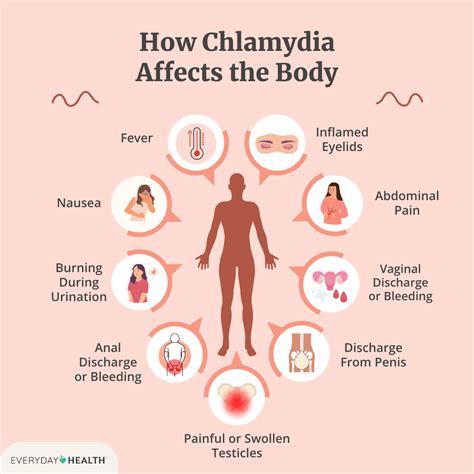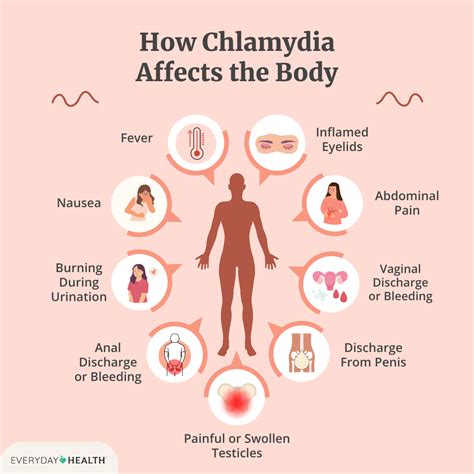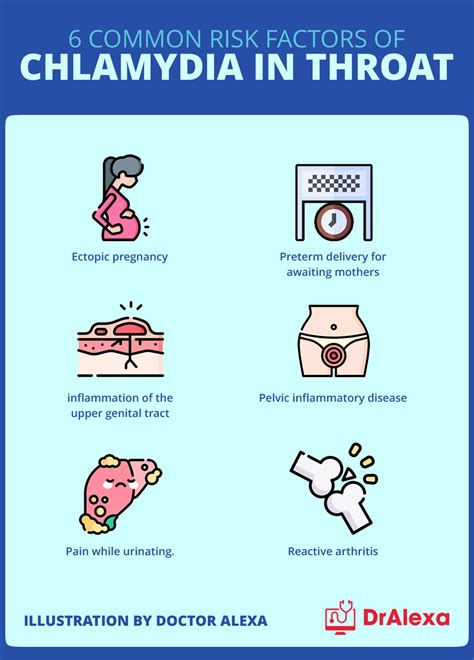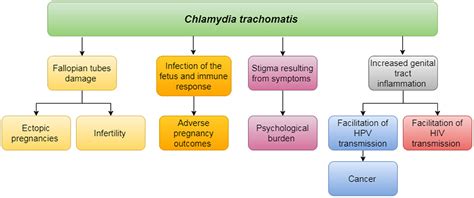Intro
Discover the causes of Chlamydia, a common sexually transmitted infection, and learn about its symptoms, transmission, and risk factors, including unprotected sex and bacterial infection.
Chlamydia is a sexually transmitted infection (STI) caused by the bacterium Chlamydia trachomatis. It is one of the most common STIs worldwide, affecting millions of people each year. Understanding the causes of chlamydia is crucial in preventing and treating this infection. Chlamydia can be spread through vaginal, anal, or oral sex with an infected person. The bacterium can also be passed from an infected mother to her baby during childbirth.
Chlamydia is often asymptomatic, meaning that many people who are infected do not experience any symptoms. However, when symptoms do occur, they can include abnormal vaginal discharge, painful urination, and abdominal pain in women, and discharge from the penis, painful urination, and testicular pain in men. If left untreated, chlamydia can lead to serious health complications, such as pelvic inflammatory disease (PID), infertility, and increased risk of HIV transmission.
The importance of understanding the causes of chlamydia cannot be overstated. By knowing how the infection is spread, individuals can take steps to protect themselves and their partners. This includes practicing safe sex, getting regular STI testing, and seeking medical attention if symptoms occur. In this article, we will delve deeper into the causes of chlamydia, its symptoms, treatment options, and prevention strategies.
What is Chlamydia?

How is Chlamydia Transmitted?
Chlamydia is primarily transmitted through sexual contact with an infected person. The bacterium can be present in the semen, vaginal fluids, and anal fluids of an infected person. When these fluids come into contact with the mucous membranes of another person, the infection can be transmitted. Chlamydia can also be spread through oral sex, although this is less common. The infection can also be passed from an infected mother to her baby during childbirth, which can cause eye and respiratory infections in the newborn.Symptoms of Chlamydia

Treatment Options for Chlamydia
Chlamydia is typically treated with antibiotics. The most common antibiotics used to treat chlamydia are azithromycin and doxycycline. These antibiotics are usually taken orally and can cure the infection in 1-2 weeks. It is essential to complete the full course of antibiotics, even if symptoms disappear before finishing the treatment. This ensures that the infection is fully cleared and reduces the risk of complications.Prevention Strategies

Complications of Untreated Chlamydia
Untreated chlamydia can lead to serious health complications, including: * Pelvic inflammatory disease (PID): Chlamydia can cause PID, which can lead to infertility, chronic pelvic pain, and increased risk of ectopic pregnancy. * Infertility: Untreated chlamydia can cause scarring in the fallopian tubes, leading to infertility. * Increased risk of HIV transmission: Chlamydia can increase the risk of HIV transmission by causing inflammation in the genital area, making it easier for the HIV virus to enter the body. * Reactivation of latent infections: Chlamydia can reactivate latent infections, such as genital herpes, which can lead to further health complications.Risk Factors for Chlamydia

Diagnosis of Chlamydia
Chlamydia is typically diagnosed through a physical examination, medical history, and laboratory tests. The most common laboratory tests used to diagnose chlamydia include: * Urine tests: Urine tests can detect the presence of chlamydia in the urine. * Swab tests: Swab tests can detect the presence of chlamydia in the cervix, urethra, or rectum. * Blood tests: Blood tests can detect the presence of chlamydia in the blood.Treatment and Management of Chlamydia

Long-term Effects of Chlamydia
The long-term effects of chlamydia can be severe, particularly if left untreated. Some potential long-term effects include: * Infertility: Untreated chlamydia can cause scarring in the fallopian tubes, leading to infertility. * Chronic pelvic pain: Chlamydia can cause chronic pelvic pain, which can be debilitating and affect quality of life. * Increased risk of HIV transmission: Chlamydia can increase the risk of HIV transmission by causing inflammation in the genital area, making it easier for the HIV virus to enter the body.Current Research on Chlamydia

Conclusion and Future Directions
In conclusion, chlamydia is a common STI that can have severe health consequences if left untreated. Understanding the causes, symptoms, treatment options, and prevention strategies is crucial in reducing the risk of transmission and complications. Future research should focus on developing new treatments and prevention strategies, such as vaccines and point-of-care tests. By working together, we can reduce the burden of chlamydia and other STIs, improving the health and well-being of individuals and communities worldwide.What are the symptoms of chlamydia?
+The symptoms of chlamydia can vary depending on the individual and the severity of the infection. Common symptoms include abnormal vaginal discharge, painful urination, and abdominal pain in women, and discharge from the penis, painful urination, and testicular pain in men.
How is chlamydia transmitted?
+Chlamydia is primarily transmitted through sexual contact with an infected person. The bacterium can be present in the semen, vaginal fluids, and anal fluids of an infected person. When these fluids come into contact with the mucous membranes of another person, the infection can be transmitted.
Can chlamydia be cured?
+Yes, chlamydia can be cured with antibiotics. The most common antibiotics used to treat chlamydia are azithromycin and doxycycline. It is essential to complete the full course of antibiotics, even if symptoms disappear before finishing the treatment.
